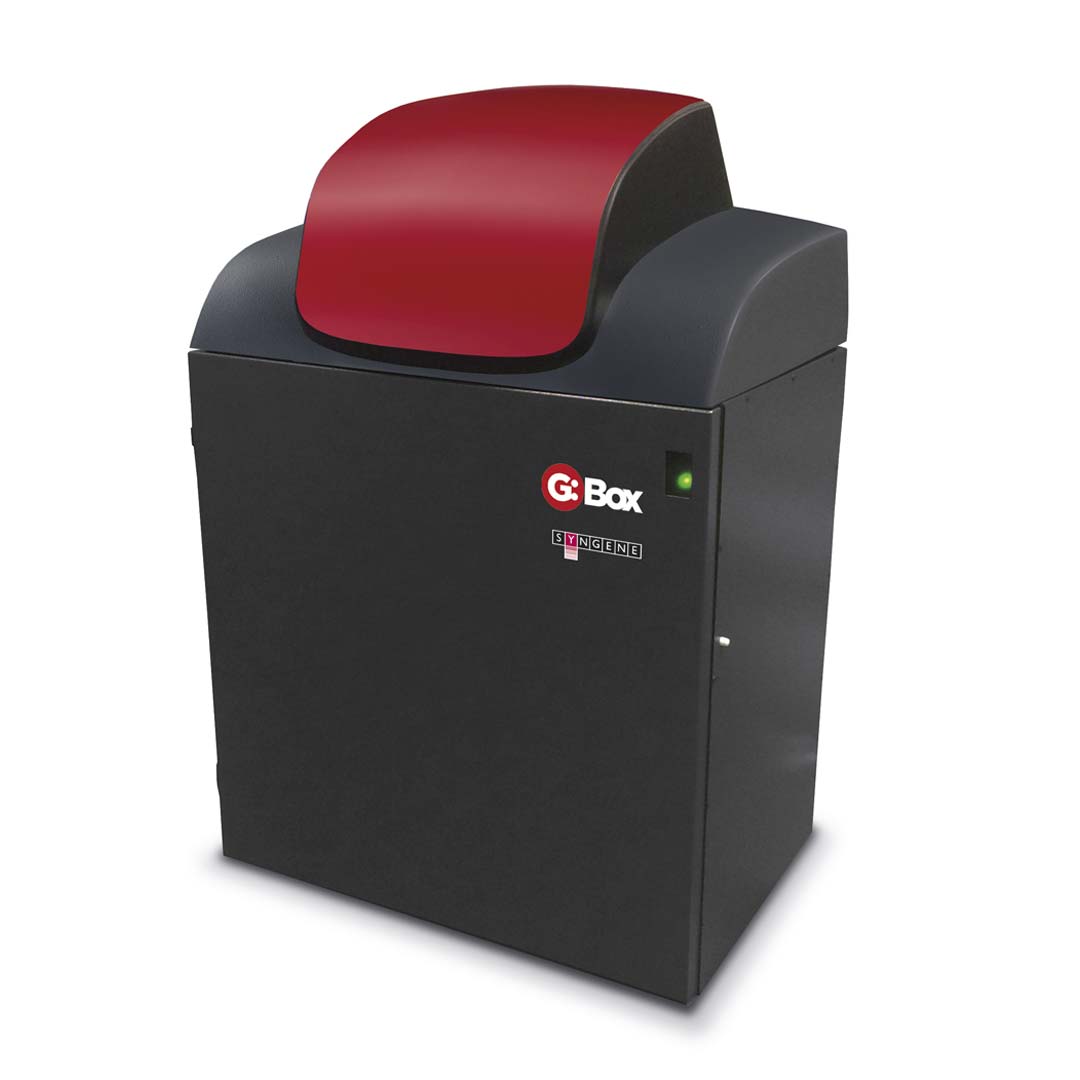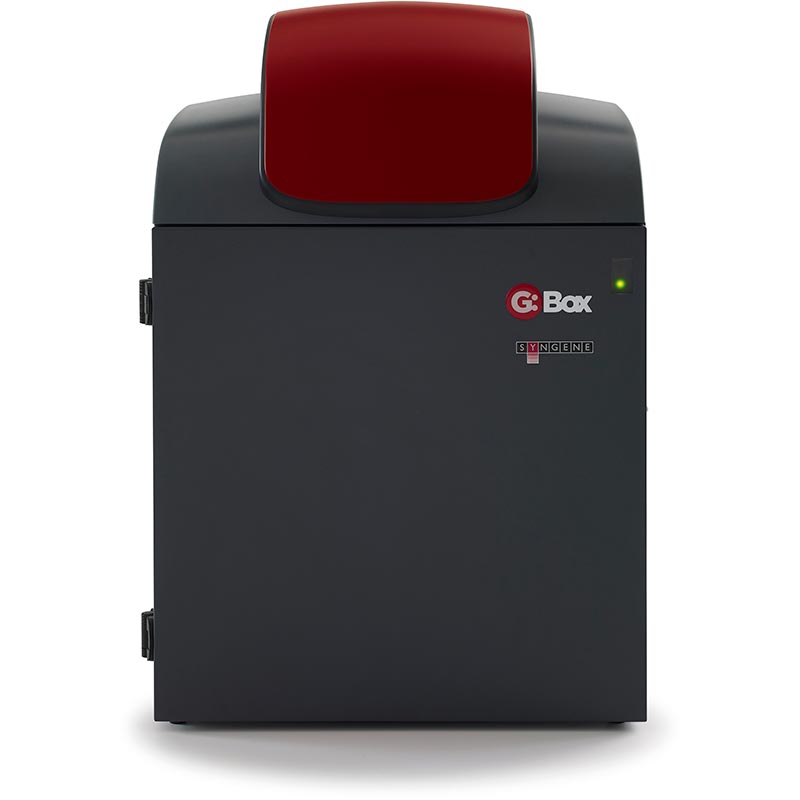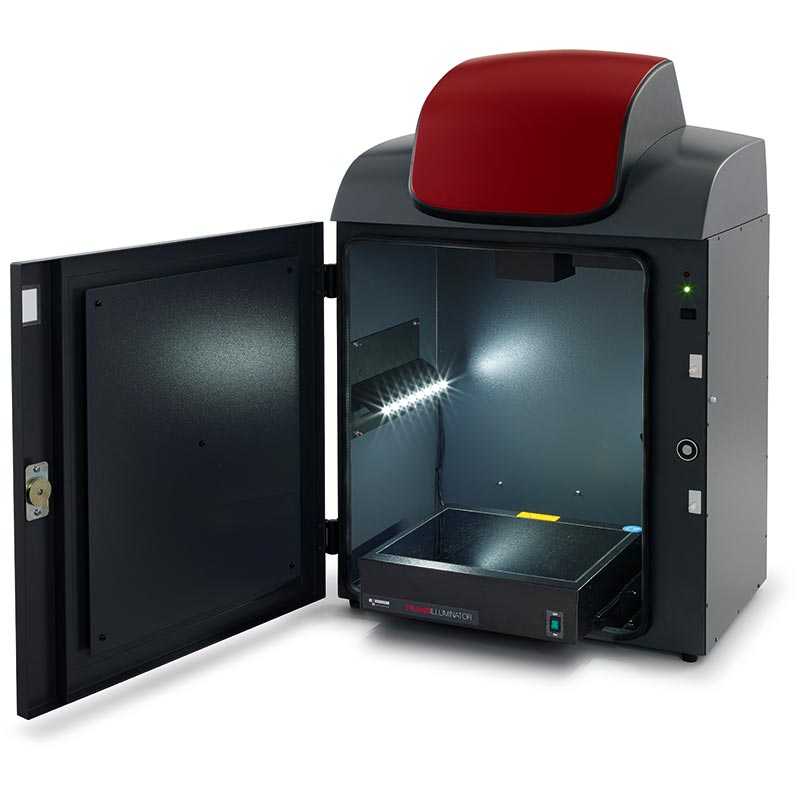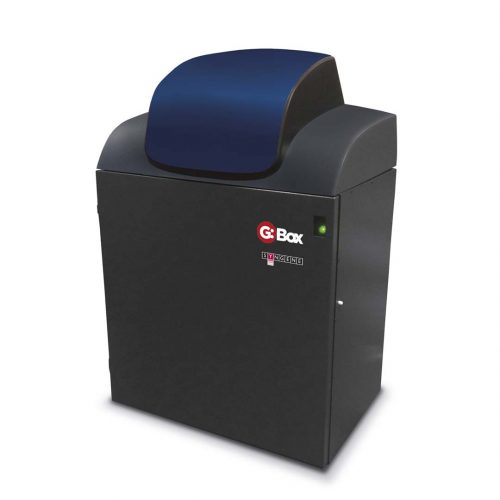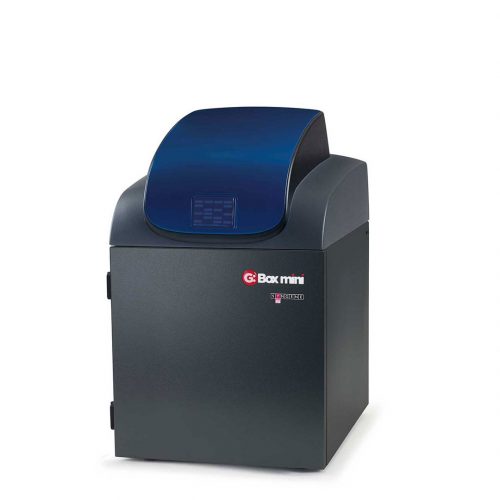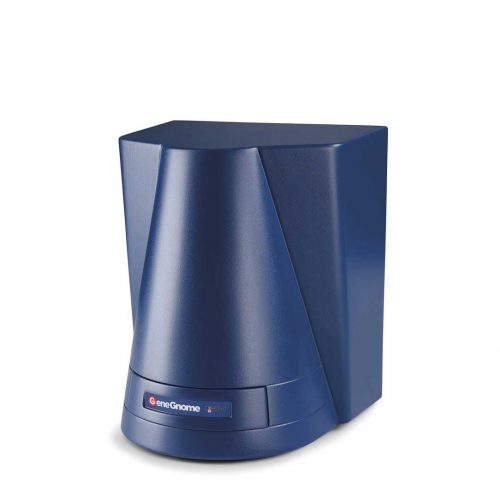This product has been viewed 3 times today.
Ordering in the UK? Contact us directly to request a quote and place an order sales@syngene.com
The new generation, entry-level G:Box F3 gel doc system with high-resolution camera for all fluorescence requirements.
Versatile high-resolution gel doc
An entry-level system for imaging fluorescence and visible applications, the G:Box F3 LFB gel doc is the ideal solution for your laboratory.
Using your choice of dyes or stains, the G:Box F3 LFB automatically selects the proper lighting and filters to detect close bands on both small and large gels. This system is the ultimate in gel doc flexibility when choosing white light options for Coomassie Blue, UV and blue lighting options, ethidium bromide or SYBR® Safe gels.
The stylish and modular designed G:Box F3 LFB gel doc system includes a high resolution 5m pixel camera which is capable of giving outstanding images with incredible spatial resolution as well as a motor-driven zoom lens and a motor-driven filter wheel and feedback lens, allowing you to optimise your image capture using user protocols.
The system is controlled by GeneSys application-driven image capture software and comes complete with unlimited copies of GeneTools analysis software.
| Image Resolution | 5MP |
|---|---|
| Effective Resolution | 15.1MP |
| A/D | 12/16 bit |
| Greyscale | 65,536 |
| Lens | Zoom F1.2 with lens feedback option (motor driven) |
| Filter Wheel | 7-Position Motor Driven |
| UV Filter | Yes |
| Use with external PC and Printer | Yes (not included) |
| Lighting (included) | Epi LED White Lights |
| Lighting (optional) | Epi UV Short, Medium and Long wave |
| Max Image Area | 325x241mm |
| Min Image Area | 56x42mm |
| Dimensions (WxHxD) | 570x840x540mm |
| Weight | 37kg |
| Power Input (V) | 100-240 |

